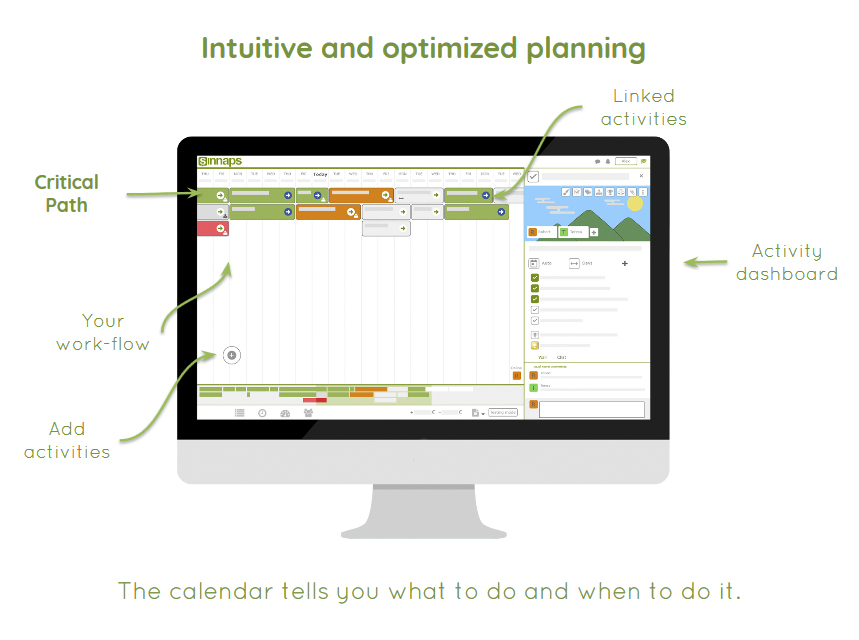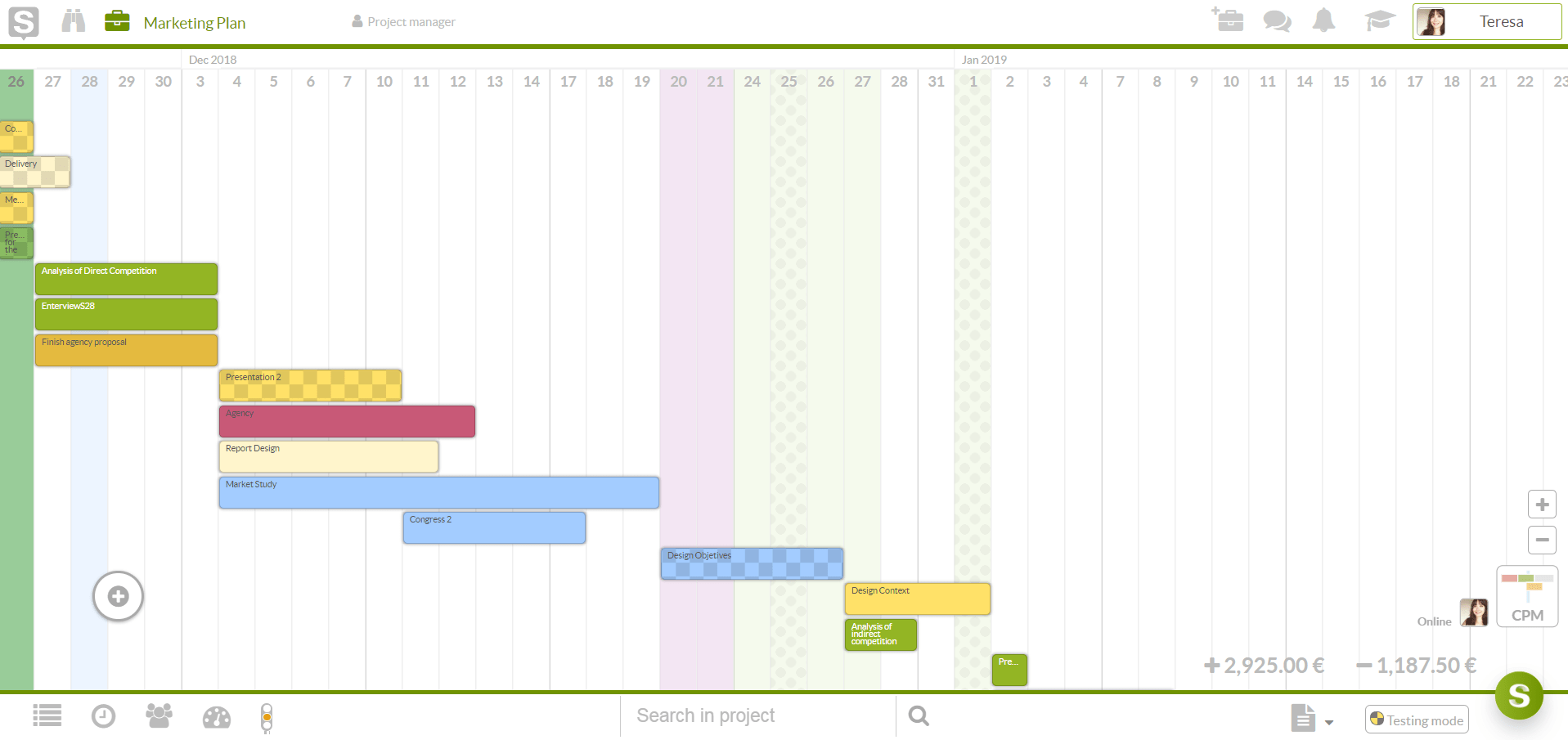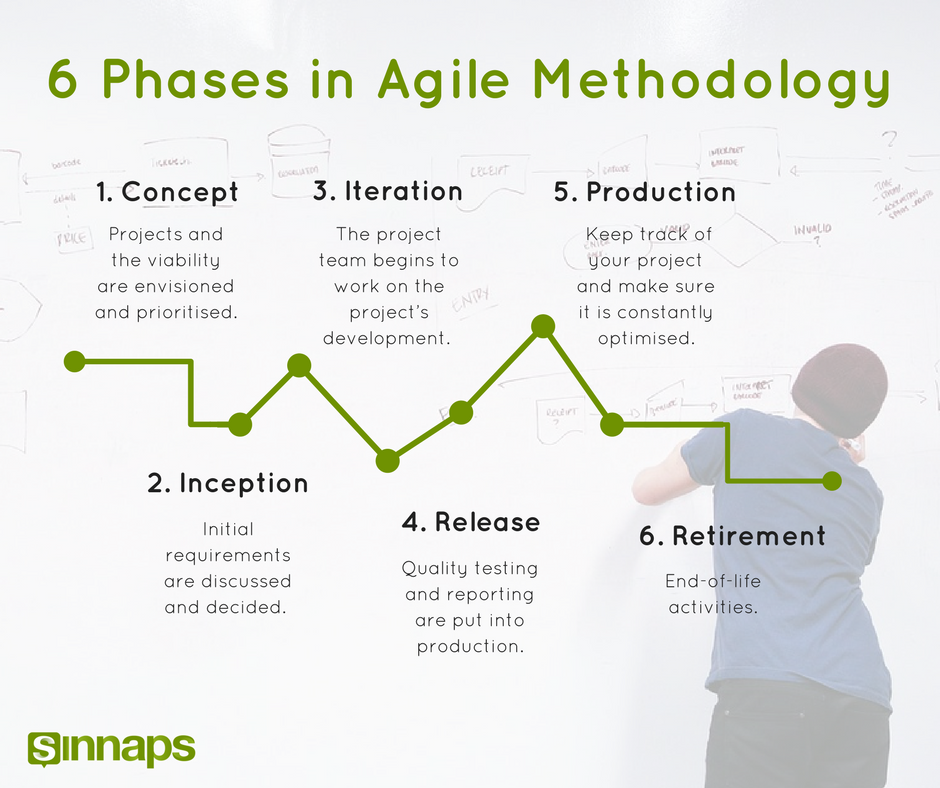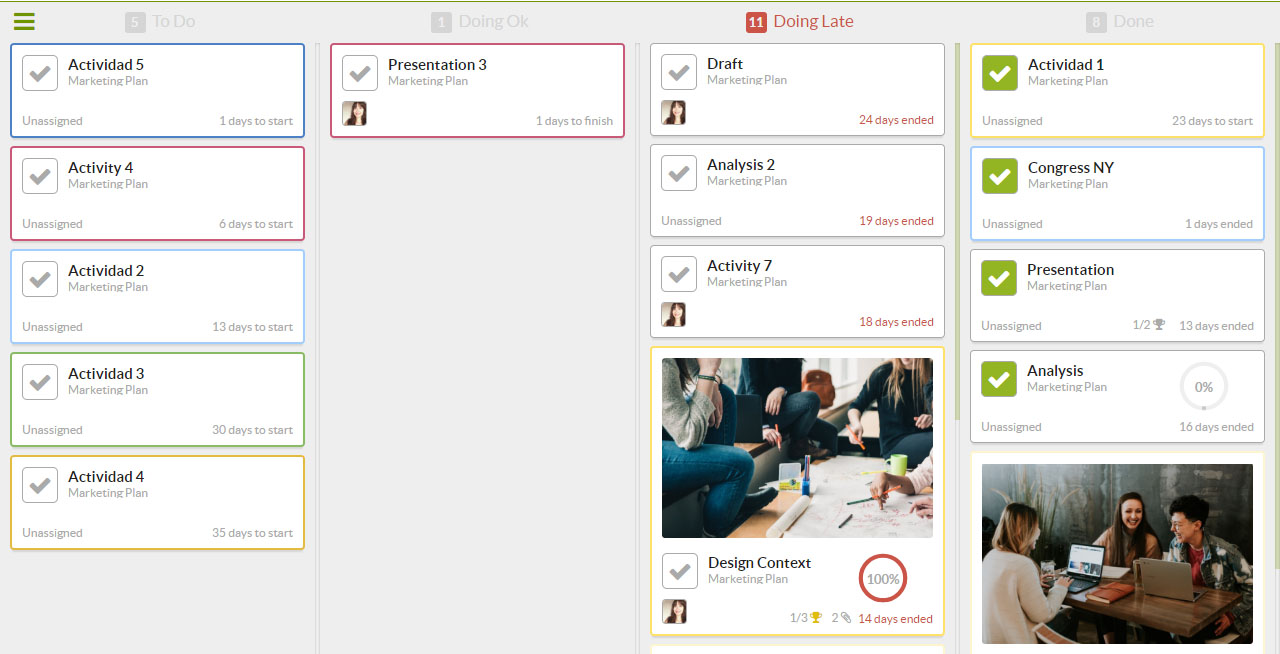We live in a changing world that requires one to be responsive to change. Business organizations are not left out; the quest to meet the needs of their customers by delivering products and services that meet their expectations has spurred them to embrace agile software development methodology.
It provides them with an iterative approach in the design and development of software. No doubt, the task of getting the best out of agile software development methodology is preceded by understanding the agile software development life cycle by the business organizations.

Agile software development life cycle embraces agile management principles in the development of technology by enabling the agile team to break down the lengthy requirements of the projects, build and test phases down into smaller components and assisting the team in delivering working software rapidly.
Sinnaps can be used by agile teams in their software development strides because it supports effective planning of their activities to ensure that they fulfill the objectives of their projects.
Also, it can determine the critical path of your project activities by placing a huge premium on task dependencies. This saves you and your team a lot of time in the process thereby enabling you to meet the deadlines of your project.

Índice
Agile Software Development Life Cycle: What You Need to Know
In agile software development life cycle, the project teams are afforded an adaptive methodology in software development, unlike the predictive waterfall software development methodology.

The project teams are afforded the adaptation in discussing the terms of projects’ milestones, features, resources, and working at length in the formulation of plans that will be used to complete the entire project in agile software development life cycle.
It takes into consideration the customers’ requirements before the development of the project thereby ensuring that it is executed on time and does not exceed the budgetary provision.
In comparing SDLC waterfall-agile, waterfall development method adheres to strict phases by sticking to the original requirements and design plan is done at the beginning of the project while agile is more accommodating to change and it embraces flexibility.
Agile software development life cycle overcomes the challenges that are synonymous with SDLC waterfall methodology by embracing change and ensuring quicker software development process that focuses on agile manifestos’ of values and principles.
This assists the team members in eradicating bottlenecks and maintaining their focus on the delivery of software iterations consistently. In agile project development life cycle, the team usually decides at the start of agile sprint what they intend to achieve over a certain timeframe and commit to building a series of features and delivering working software that can be set up in a production environment at the end of the SDLC sprint.
The following process flows are involved in agile system development life cycle:
- Concept: here, the projects are visualized and prioritized.
- Inception: here, the team members are known, funding set aside, and initial environments and requirements are extensively discussed.
- Iteration: the development team works to ensure the delivery of working software depending on iteration requirements and feedback.
- Release: in this, quality assurance, testing, internal and external training, and documentation, development, and the final release of the iteration into production.
- Production: this requires ongoing support for the software.
- Retirement: this is the end of life activities and it includes customer notification and migration.
One of the notable agile life cycles is the extreme programming life cycle. It allows changes to be easily incorporated into the software development process. It begins with planning and all iterations consist of four basic phases in its life cycle which are designing, coding, testing, and listening.

Agile risk management is vital in agile software development life cycle because risk refers to the factors that contribute to the success or failure of a project. Hence, agile risk management ensures the practice of the principles that mitigate or eliminate risks that could lead to failure in software development projects.
How to manage changes and create simulations in Test Mode:
In lean and agile, business organizations can embrace the principles of both methodologies to enhance their efficiency and productivity in delivering products that satisfy the needs of their clients.
Agile SDLC Model
Agile SDLC model offers organizations a platform to develop software in small and rapid segments. It assists the software development team in implementing changes quickly and it allows them to adapt to changes more rapidly.
Also, agile SDLC model helps the project team in the implementation of user-requested changes swiftly during software development projects. It enables the software development team to introduce small changes to the users in its release frequently and each release serves as the basis for the next release.
Furthermore, it allows the project team to consult the relevant stakeholders much earlier in the process to enhance their satisfaction because they will be provided with the new functionality that meets their expectations.
Also, it uses agile roadmap that differs from traditional software development where the team must finish each phase before proceeding to the next phase. In SDLC methodologies agile, planning and analysis are not always comprehensive as done in the traditional model but it is always enough to know the scope of the needed changes.
Next in line after the definition of the scope of the project, the team is required to go through the cycle of analysis, design, development, and frequent testing to allow the team to release small changes into the production. However, the cycle can take up to 30 days for the project.
The following are the benefits of an agile SDLC model:
- It ensures faster implementation of change
- It allows more flexibility for changes
- It promotes better communication with the user and ensures greater satisfaction of the user.
Furthermore, in the agile SDLC diagram, you have an SDLC process flowchart that illustrates the design, analysis, evaluation, testing, and implementation of a project. In hybrid SDLC, you have a business process model that is linked to the decision model through an octagon in the review project conditions activity. It is useful for the development of a business requirement document.
Scrum SDLC
This is a scrum framework that permits the software development team to implement agile development methodology. It uses agile roadmap of iterative development in a software development project.
Agile Dashboard to apply Scrum Methodology

In scrum SDLC, the project is divided into several phases with each of them resulting in a ready-to-use product. At the end of each agile sprint, the product is delivered to the customer.
Scrum SDLC entertains the feedback of the customer to unravel the possible problems to change the initial plan if required.
The following are required in scrum SDLC:
- Product owner: he ensures the satisfaction of the end user’s interests.
- The scrum master: he is responsible for the coordination of the entire process and holds the scrum meeting.
- Scrum team: the team is responsible for the development of the product. Also, it is responsible for programming, analysis, and testing of the product.
Online Free Project Management Course
You will receive 5 lessons over the course of 15 days

SDLC Phases Agile
Scrum model is in phases and the following are SDLC phases in agile:
- Product Backlog creation: this entails the list of features that will be implemented during the development process. It is created based on priority and its every item is called a user story. The description of every user story should include the importance, initial estimate, and how to demonstrate it.
- Sprint planning and sprint backlog creation: with agile planning, project teams can plan their sprint by defining the items that are done in each sprint. It helps in creating a repeatable process to assist them in learning how much they can accomplish. The team will decide the length of the sprint and it is usually 2 weeks.
The sprint enables you to release the working version of a product more often. This allows you to entertain the feedback of the customer to discover the flaws and improve on it.
The cooperation of relevant stakeholders and the team members is very important, the product owner decides the importance of proper user story and the scrum team will define the required labour costs. Then, the scrum team selects the most important user stories from the product backlog and decides how they go about it.
- Scrum meeting: when the user stories for the current phase are selected, the development process starts. In tracking the ongoing working process, a task board with big cards is usually used.
The big cards are with the names of the user stories and notes that describe the tasks that are required for the implementation of the story. In a scrum meeting, the team will have information about the status of the current project.
For example, Sinnaps can be used in planning the scrum meeting to achieve the objectives of the meeting.
- Testing and product demonstration: here the product’s effectiveness is tested and the demonstration of the product is done by creating a review and demonstrating the results of the work of the product. This helps the stakeholders in deciding on the further changes that can be implemented.
- Retrospective and next sprint planning: here, the relevant stakeholders discuss the results and determine ways to improve the development process in the next stage.
Agile project management with kanban helps project managers in achieving ease in project management by ensuring that they are well-organized and gain visual insights into the task of their projects.
Also, the use of agile project management software assists the project teams in a thorough inspection of the product iterations during the development phase. This ensures that they maintain their focus on the incremental changes that will deliver the right values to customers.
Sinnaps is an example of agile project management software; it supports value creation through proper planning and execution of the activities of the project.

